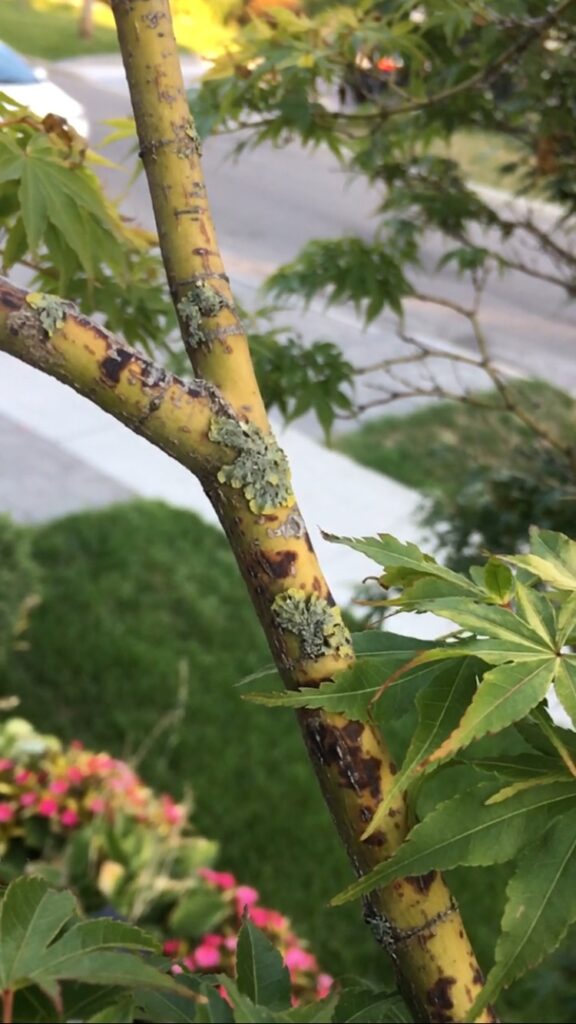
Hi there,
We planted a mature Katsura Japanese Maple in our front south facing yard about 5 years ago. It is currently about 12 feet tall and 5 ft wide. It initially thrived with lots of new growth, but in the last two years, it has been dying slowly. We loose 2 to 3 branches every year. It seems that in the spring, the leaves start sprouting but by mid April, the branch grows a green scale (see photo) and the leaves start turning brown and the branch dies.
Any idea what is causing this? Can we save the tree? I’m afraid we’ve lost too many branches at this point.
Please help! Thank you.
Thank you sending this question re your Acer palmatum ‘Katsura’. The care and nurture of Japanese maples is a horticultural challenge known to be rich in issues, as well as good solutions, for many gardeners.
The first thing noted in your photo is the “green scale” you mention. But this appears to be possibly a lichen growth, and not a true “scale” organism. Lichens don’t harm the plants they grow upon, but often plants that are struggling can be covered with them. Lichens can grow prolifically on trees with dead twigs and branches, and undersized, or off-color leaves. This is usually a sign that something more serious is going wrong.
Your maple tree’s roots are important for growth, and health, and provide your tree with the water, and nutrients, they need to survive. Just consider: a plant can loose all of its leaves and still recover, but if it looses all, or even most of its roots, it will die.
One common cause of root system problems is irregular water supply. Too much, or too little. Though roots live in the soil, they must have oxygen to live, and grow. This is especially true for the tiny, sensitive roots: root hairs. These fine roots are responsible for absorbing the majority of the water, and nutrients, plants need each day. Oxygen exists in soil in the tiny spaces between individual soil particles. When these spaces fill with water there is no room left for oxygen, causing roots to literally suffocate. In addition, soils that stay wet often harbor root rot diseases that can slowly, or rapidly, kill susceptible plants.
Flip side of the coin is drought; the roots hairs need just the right amount of water to be able to fulfill the tree’s needs: a slow drip hose circling your Acer palmatum ‘Katsura’ will provide a regular uptake of water, while allowing for a healthy combination of oxygen.
During this season’s drought-y summer weeks, watering has been a particularly important treatment for urban Japanese maples. As you mention, your tree is facing south, and possibly (depending on what shade might cover it) has been subjected to strong summer sunlight, and heat, since mid-April. Prune your tree of dead or diseased branches, and work on a plan to provide a daily/ weekly watering regimen.
Also, to help augment your knowledge of Acer palmatum ‘Katsura’, the Toronto Master Gardeners have a guide for your reference:
Growing Japanese Maples: A Toronto Master Gardeners Guide

